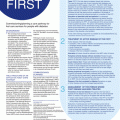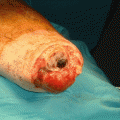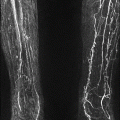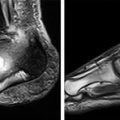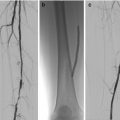Oral agent classes (e.g., denotes other agents in same class available)
Biguanides (metformin)
Sulphonylureas (e.g., gliclazide)
Thiazolidinediones (pioglitazone)
Alpha glucosidase inhibitors (acarbose)
Meglitinides (e.g., repaglinide)
Dipeptidyl peptidase-4 (DPP-4) inhibitors (e.g., sitagliptin)
SGLT-2 inhibitors (e.g., canagliflozin)
Injectable treatments
GLP-1 agonists (e.g., liraglutide)
Insulin (short acting; e.g., novorapid, long acting; e.g., lantus, mixed; e.g., humulin M3)
Ultimately, infection and ischaemia are the direct causes of amputation in the diabetic foot. When an individual with diabetes is admitted to hospital, their feet should be inspected routinely regardless of the reason for admission. Foot complications account for considerably more hospital admissions than any other complications of diabetes. In England alone, 120 amputations a week are performed in people with diabetes, many of which could be prevented. Over £119 million is spent each year on these diabetes-related amputations [1].
Individuals with suspected active peripheral arterial disease or foot ulceration, acutely necrotic toes or a warm swollen foot should be referred immediately for specialist assessment. Specialist services available will depend on locality. This should include a specialist podiatry service as part of a Diabetes Multidisciplinary Team (MDT), supported by a vascular surgery service. Where wounds or pressure sores exist, then involvement of a tissue viability service may also be considered to chart the wound and consider aspects of pressure relief, nutrition and specialist wound care. The presence of infection, with or without ischaemia, requires immediate attention as they both have the ability to rapidly destroy a diabetic foot, particularly in combination. An episode of acute diabetic foot disease is now often referred to as a “foot attack,” reflecting its aggressive and potentially devastating nature.
The stress of any acute illness, such as acute diabetic foot disease, can destabilise diabetic control. Part of the body’s stress response to acute illness is to prompt a surge in catecholamines, such as adrenaline or cortisol, which result in a rise in blood glucose levels. Hyperglycaemia is known to suppress the immune response to infection, so it is essential that measures are taken early in acute sepsis, regardless of the source, to stabilise diabetic control. The signs and symptoms of infection may be subtle in a patient with diabetes and may present late or be missed by inexperienced clinicians.
Acute Presentation
Whichever ward or department to which a patient with acute active foot disease is admitted, the process of medically stabilising the patient should be consistent. The pathway of resuscitation (airway, breathing, circulation, etc.), as well as local protocols for managing sepsis should always be available and followed. The unwell patient with diabetes and hypotension should have anti-hypertensive medication suspended where relevant, to promote more effective fluid resuscitation. Attention must also be given to aspects of diabetic control. The presence of acute hepatic or renal impairment can reduce drug metabolism, which can result in prolonged drug action. For example, reduced sulphonylurea excretion with moderate renal impairment can be associated with an increased risk of hypoglycaemia, through increased drug action itself, as well as through associated reduced insulin clearance. Other concurrent therapies that a diabetic patient may be taking may risk causing more harm and need to either be withheld or have their doses reviewed (Table 4.2). Often, in the face of acute illness and a presumed state of poor tissue perfusion, with or without a rise in serum lactate, the drug metformin is suspended. This is due to concerns of increasing the risk of lactic acidosis. Also, if it is likely that there will be a need for contrast-based investigations within the next 24–48 h, metformin should be stopped (see Chap. 6).
Table 4.2
Drugs to review with hepatic or renal impairment in diabetes
Antihypertensive agents |
Diuretics |
Insulin |
Metformin |
Non-steroidal anti-inflammatory agents |
Sulphonyureas |
Acute Hyperglycaemia
Whilst it is highly likely that hyperglycaemia in a patient with acute diabetic foot disease is largely as a consequence of acute sepsis, consideration should always be given to other potentially confounding issues that may need addressing (Table 4.3). In particular, the presence of the emergency states of either diabetic ketoacidosis or hyperglycaemic hyperosmolar state must be excluded, both of which can be a further consequence of acute sepsis in a diabetic patient and require specific treatment protocols to be followed.
Table 4.3
Causes of acute hyperglycaemia
Acute illness (e.g., sepsis) |
Reduced diabetes control through disease progression |
Non compliance with usual diabetes treatments |
Concurrent or recent steroid treatment |
Certain antipsychotic medications |
Diabetic ketoacidosis |
Hyperglycaemic hyperosmolar state |
It is not uncommon for the acute foot patient to either have their usual insulin regimen or doses adjusted or find themselves commenced on an intravenous insulin infusion (previously referred to as a ‘sliding scale’) to achieve relative normoglycaemia promptly. A variable rate intravenous insulin infusion (VRIII) is used as a means to achieve improved blood glucose control. It is indicated for use in acutely unwell patients, those anticipated to have a long fasting period (two or more meals) or in poorly-controlled diabetes. The convention is to draw up 50 units of actrapid (fast-acting insulin) in 49.5 mL of 0.9 % sodium chloride solution. This is then infused through a syringe pump, alongside a glucose-based fluid (e.g., 0.45 % saline with 5 % glucose and 0.15 % potassium chloride), which is administered using a volumetric infusion pump. The infusion rate of insulin (units/hour) is determined by bedside hourly capillary blood glucose measurement and is likely to be variable. The rate of fluid infused is set to deliver the hourly requirements of the patient. Hypoglycaemia is a common side effect of an insulin infusion. Great care must be taken with regular blood glucose monitoring for patients on an insulin infusion, so as not to cause hypoglycaemia. Local hospital protocols should be followed in all cases of hypoglycaemia in the diabetic patient. Maintaining good blood glucose control during the acute phase of infection and subsequent recovery will do much to promote immune system activity and better wound healing.
Stay updated, free articles. Join our Telegram channel

Full access? Get Clinical Tree


